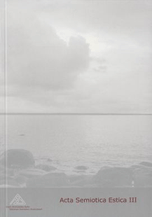Varakristlike eremiitide praktiline semiootika (Pontose Euagriose askeetiline demonoloogia)
Practical semiotics of early Christian monasticism (ascetic combat with the demons based on the treatises of Evagrius of Pontus)
Author(s): Rauno Thomas MossSubject(s): Semiotics / Semiology
Published by: Eesti Semiootika Selts
Keywords: semiotics; demonology; semiosis; semiootika; demonoloogia; semioos
Summary/Abstract: The article examines one of the most archaic aspects of semiotic discourses and development of semiotic consciousness as it is represented in the art of discernment of spirits (discretio spirituum). The article is based on the works of monastic theology written by Evagrius of Pontus (345–399). It mainly focuses on the works of “Peri Logismon” (CPG 2450), “Praktikos” (CPG 2430), “Peri Euches” (CPG 2452), “Kephalaia Gnostica” (CPG 2432), “Skemmata” (CPG2433). The idea of this treatise here is not to analyze or describe demonology as such in the fourth century, but to examine the cosmology and demonological worldview as a whole functional system that can be taken as a mark of semiotic consciousness as described by Deely (2004). The writings of Evagrius of Pontus are like taproots through which we can follow, describe, and prove the notion of signs as triadic relations in the fourth century monastic tradition. Although Evagrius of Pontus never focused on the subject of signs for its own sake in nowadays’ sense (he described mainly demonic thought as such), the study here shows that Evagrius of Pontus viewed the development of sign systematically in triadic relation. The article is divided into four parts. Firstly it describes the background of growth of popularity of monasticism, peculiarities in theology, and belief in demons as a banal everyday notion in the fourth century. The second part presents a short review of the life and works of Evagrius of Pontus. The third part is dedicated to the description of cosmology, and anthropological construction of human. The long introduction is necessary for the last part of the article where the ideas and terminology of Evagrius of Pontus are traced and opened in the light of the terms and paradigms of Charles Sanders Peirce. The triadic sense and functioning schema of demonic thought as well as the method how to recognize and distinguish it from other thoughts and ideas are explained here.
Journal: Acta Semiotica Estica
- Issue Year: 2006
- Issue No: 3
- Page Range: 138-165
- Page Count: 28
- Language: Estonian

